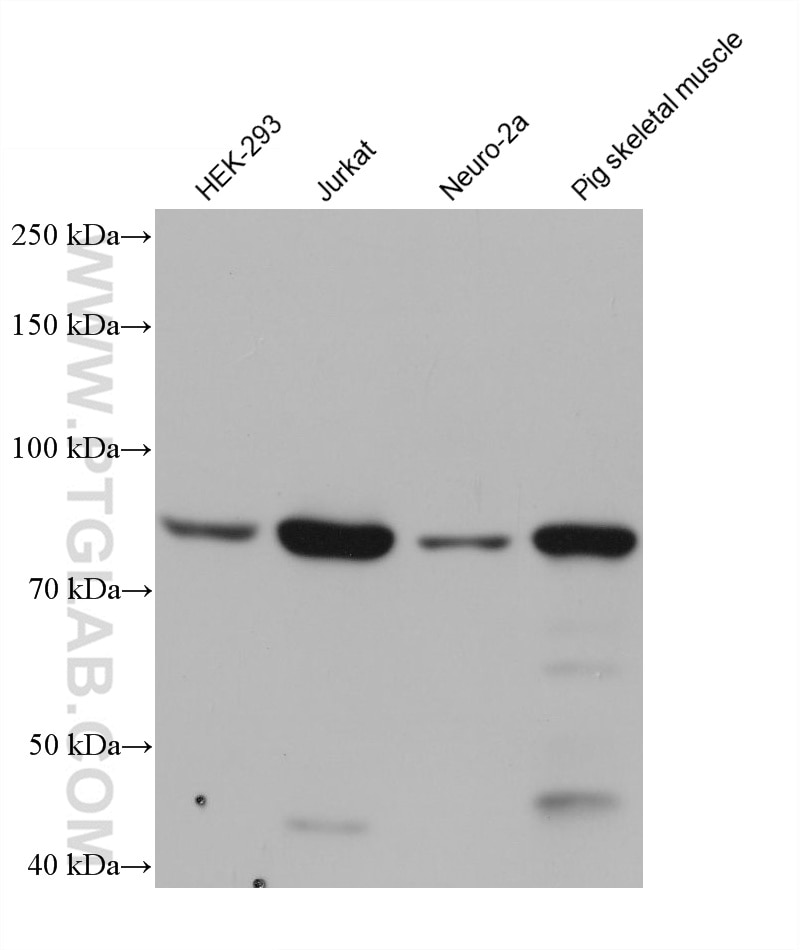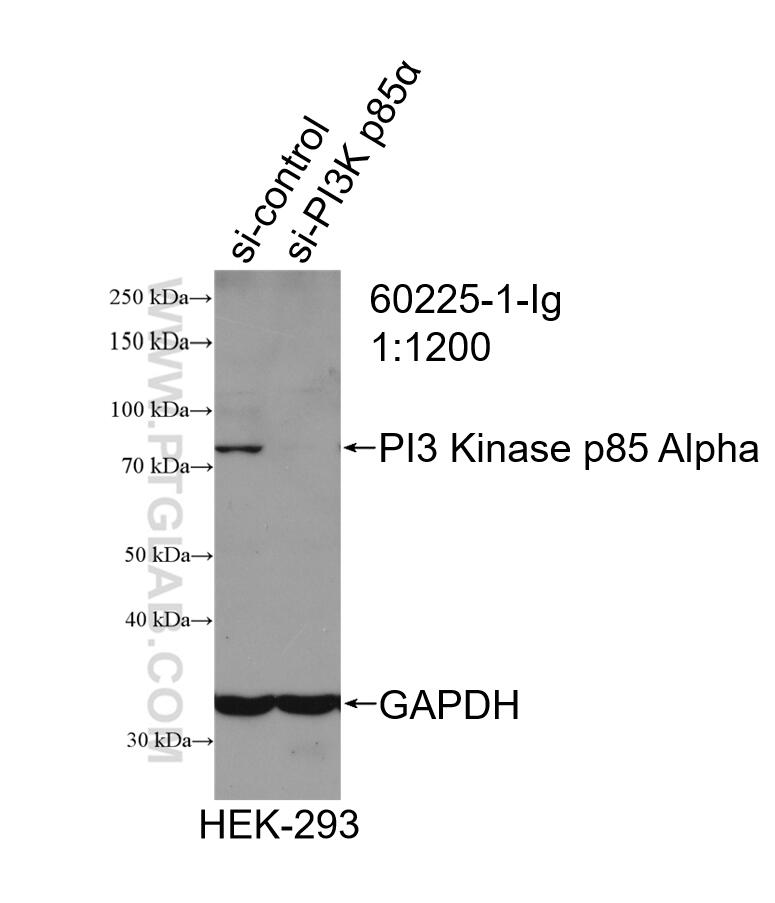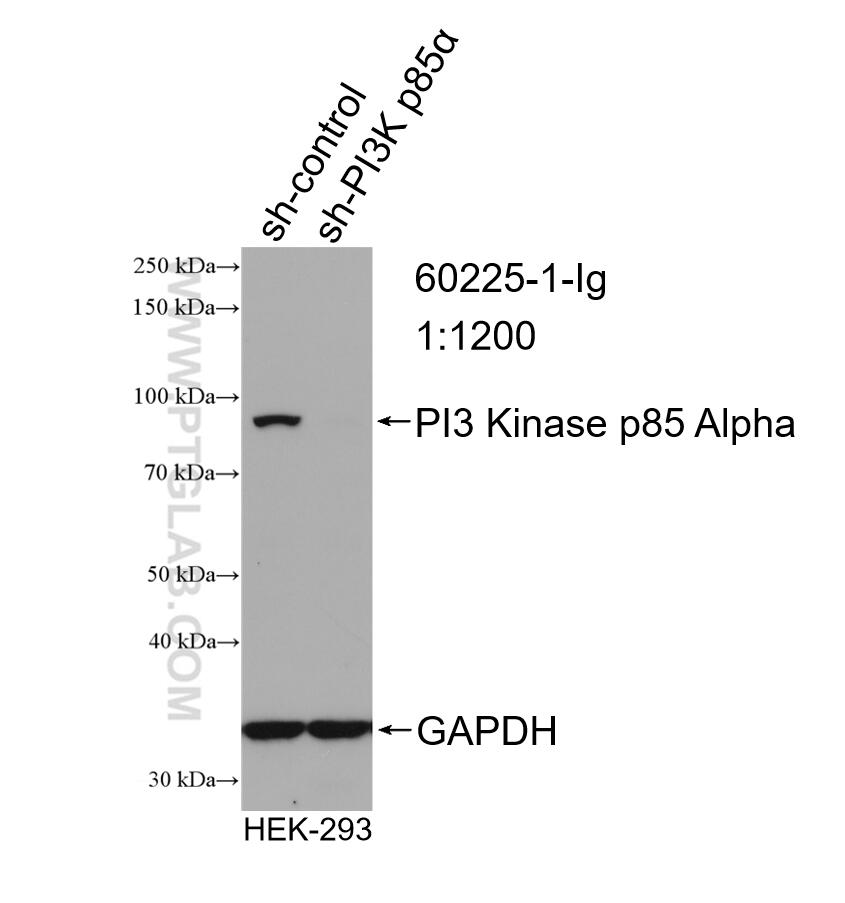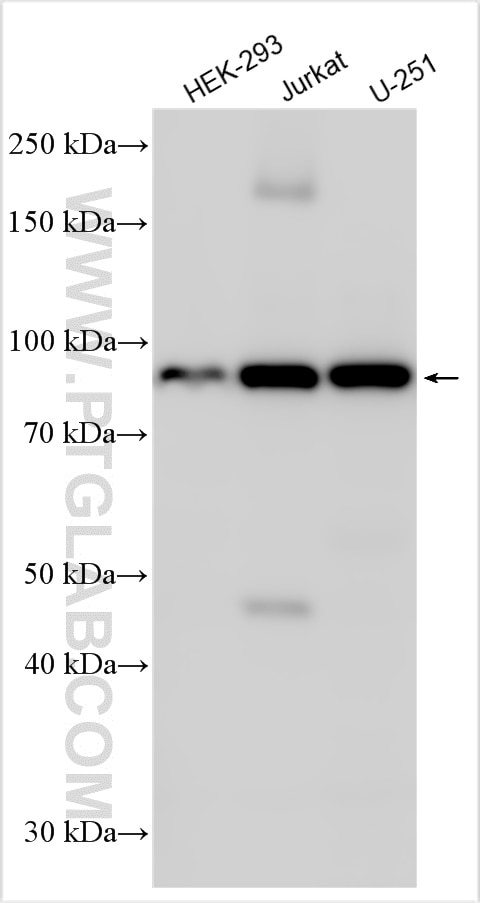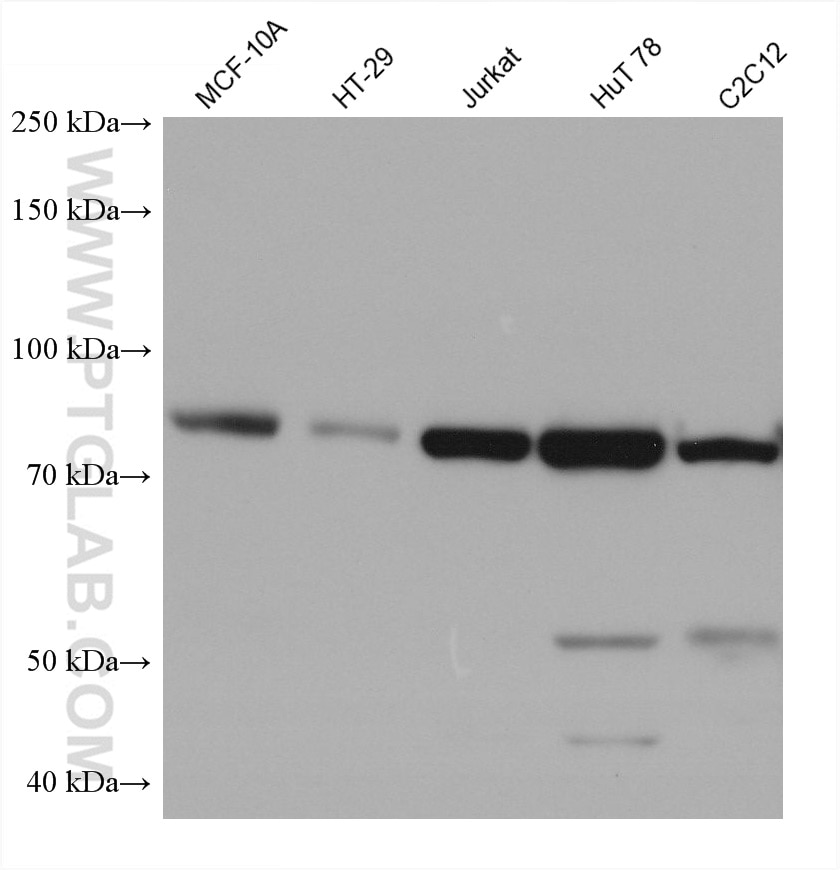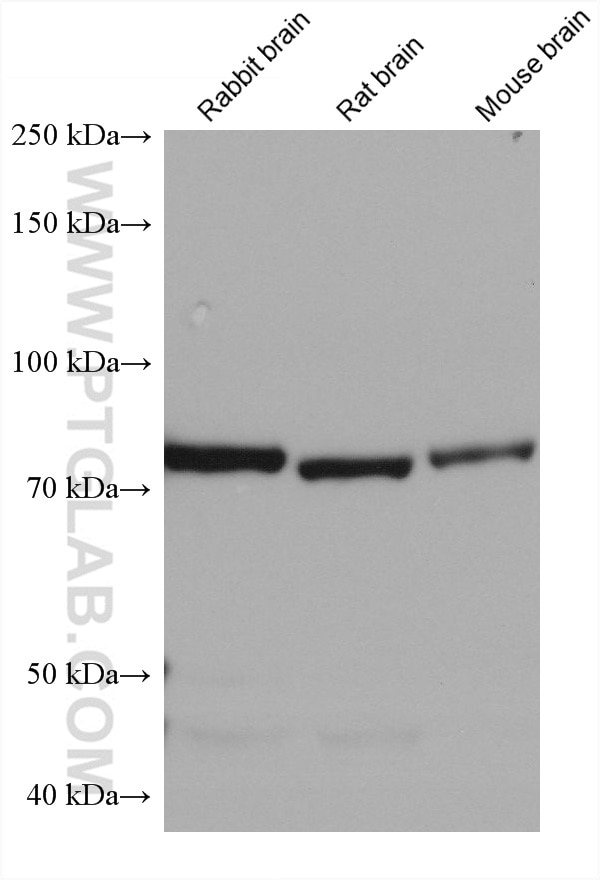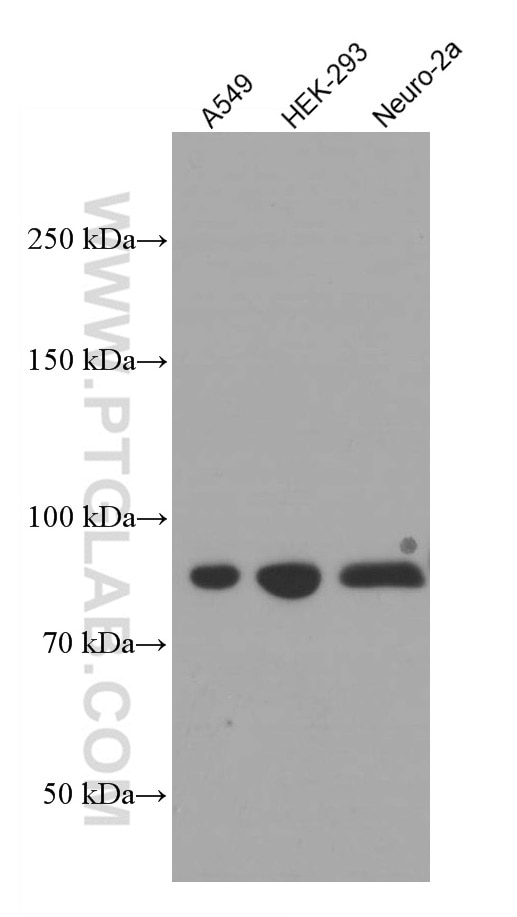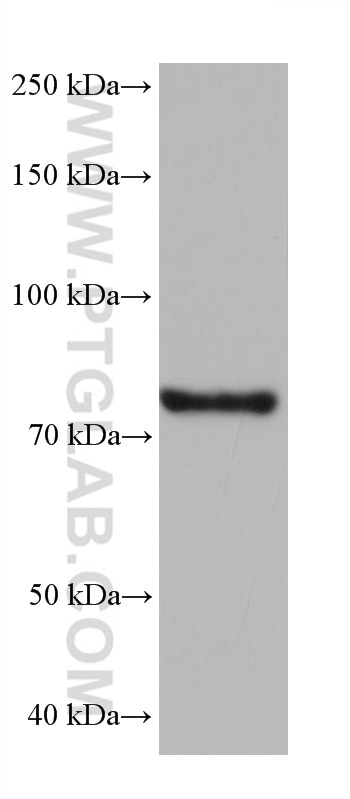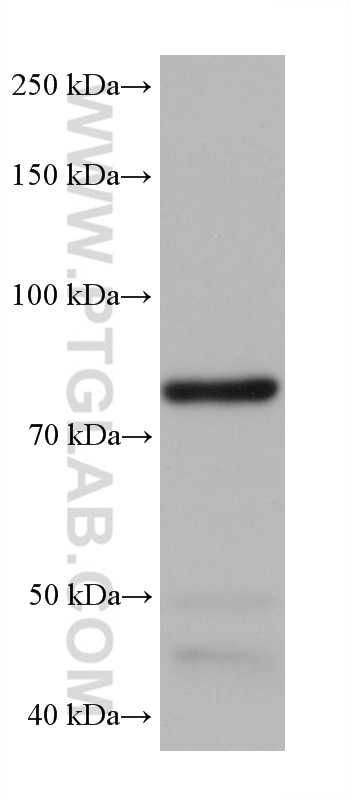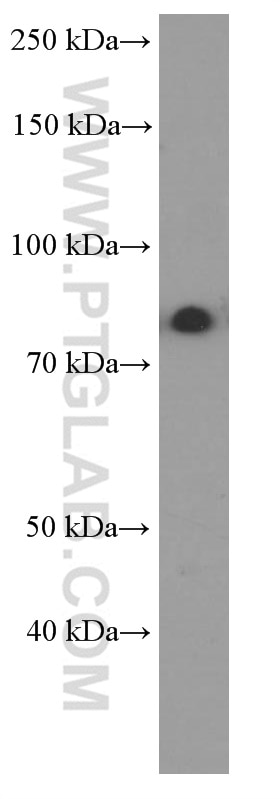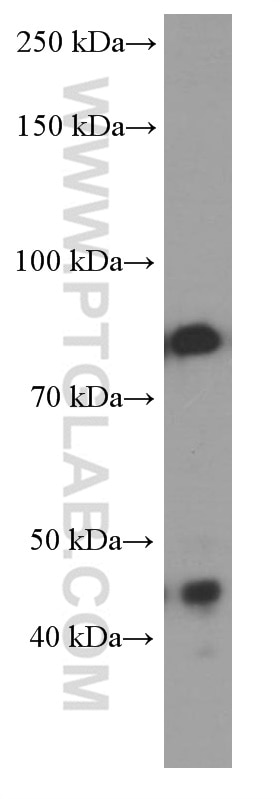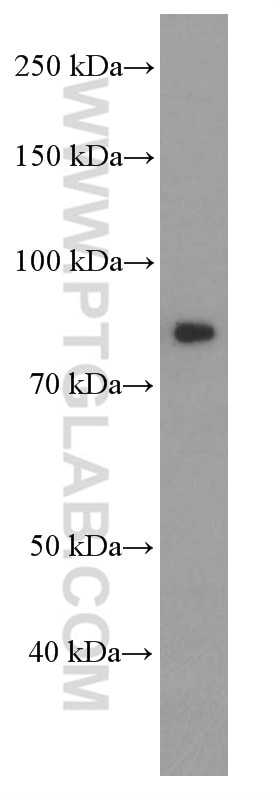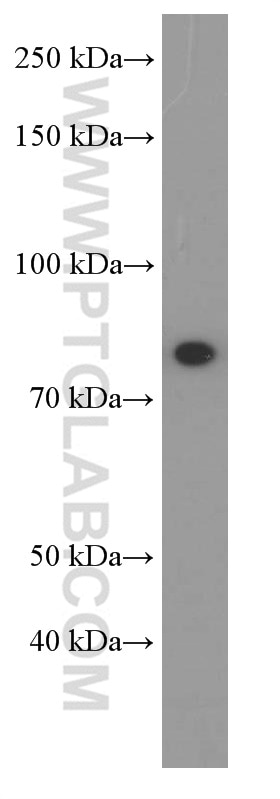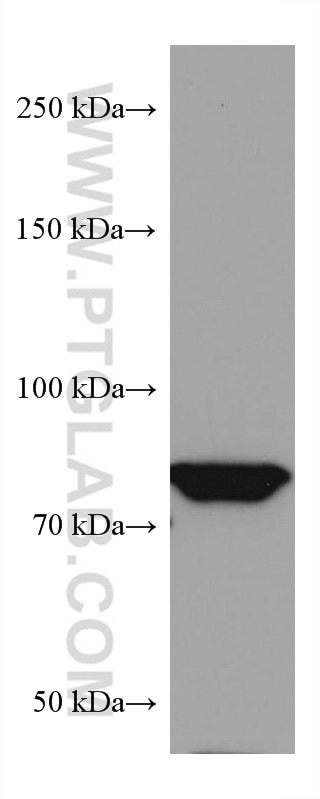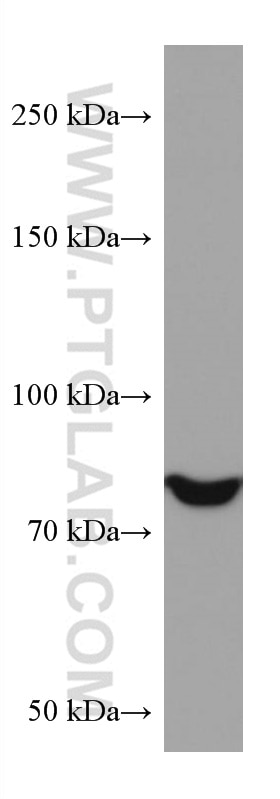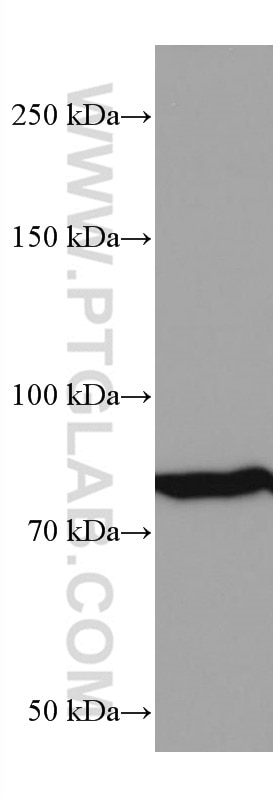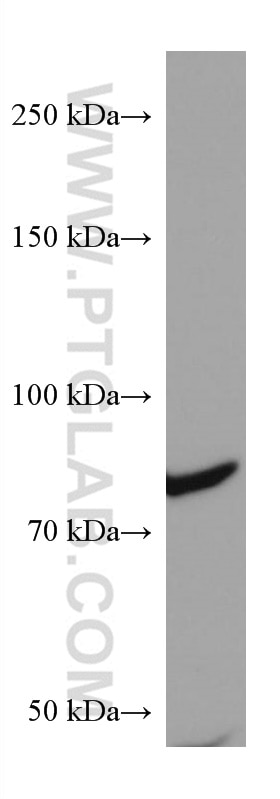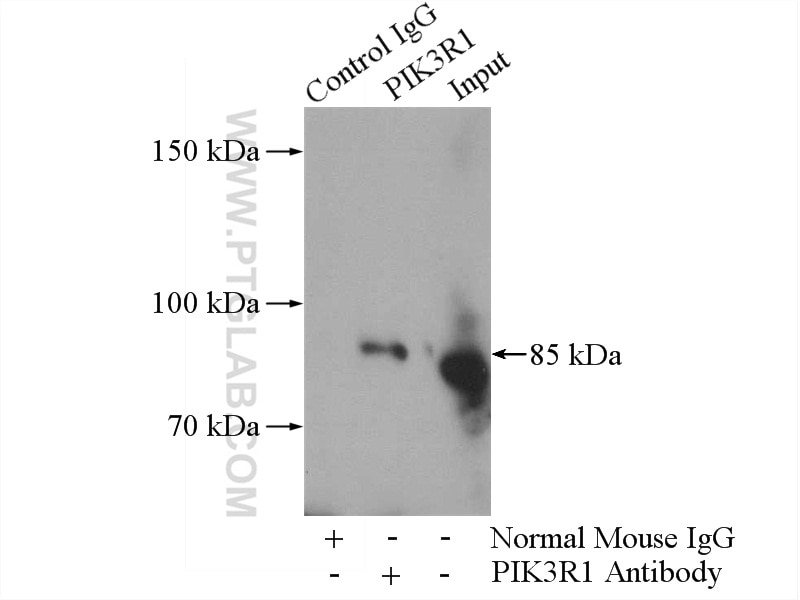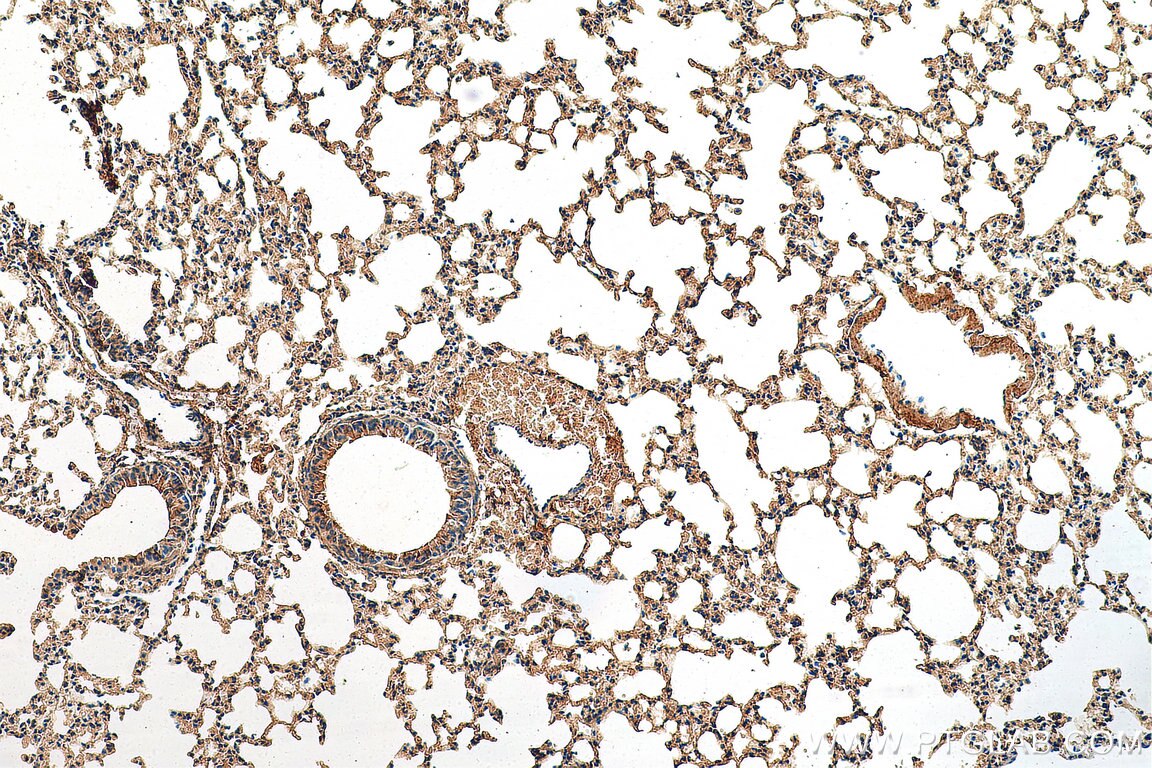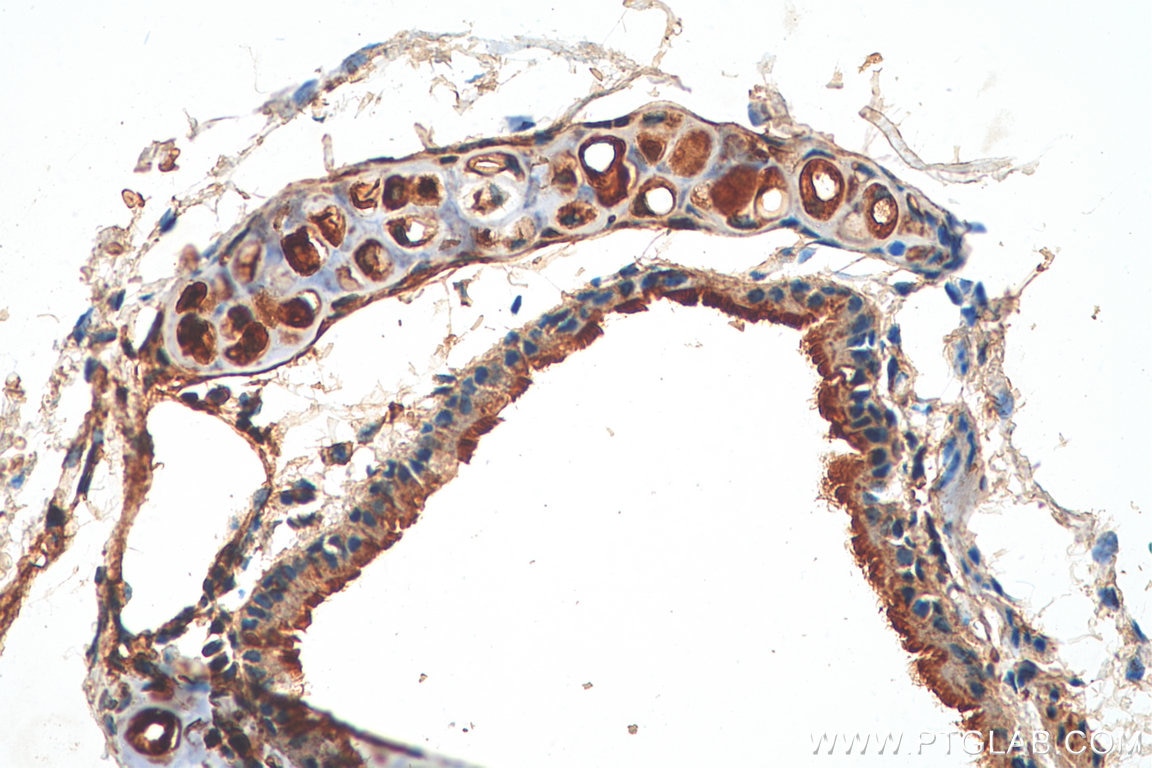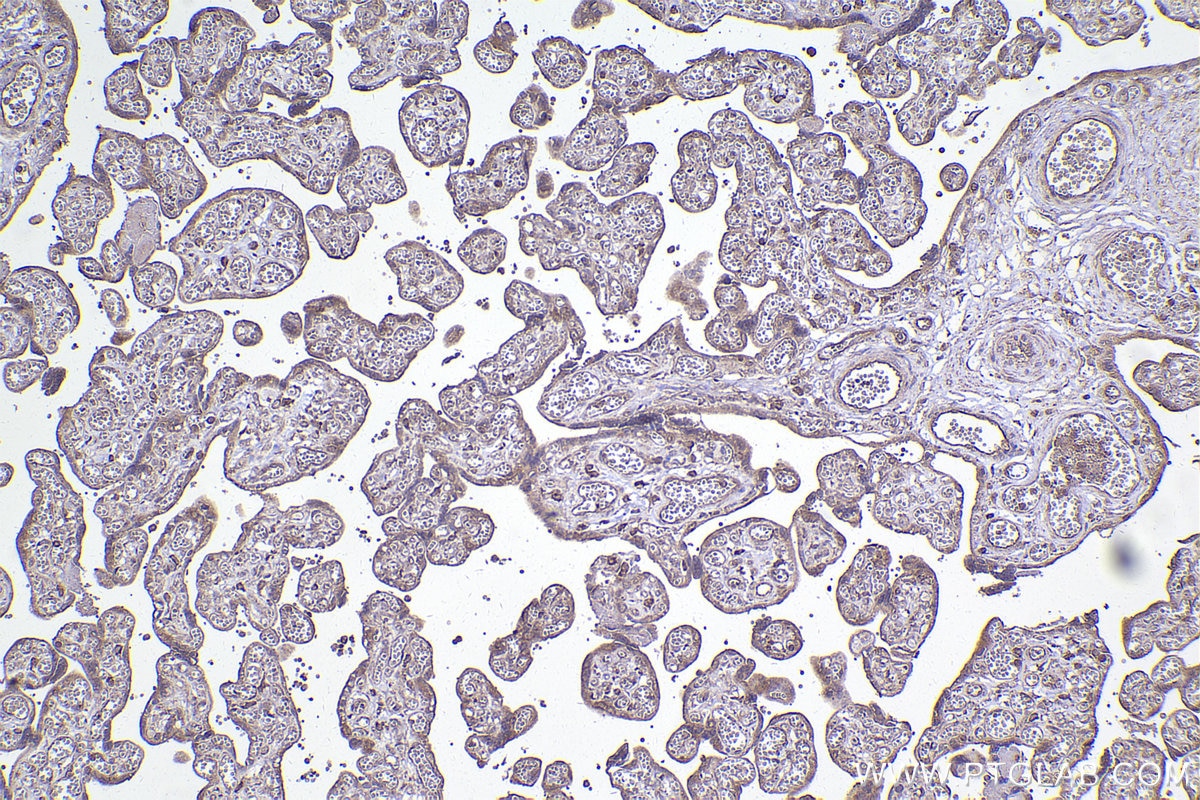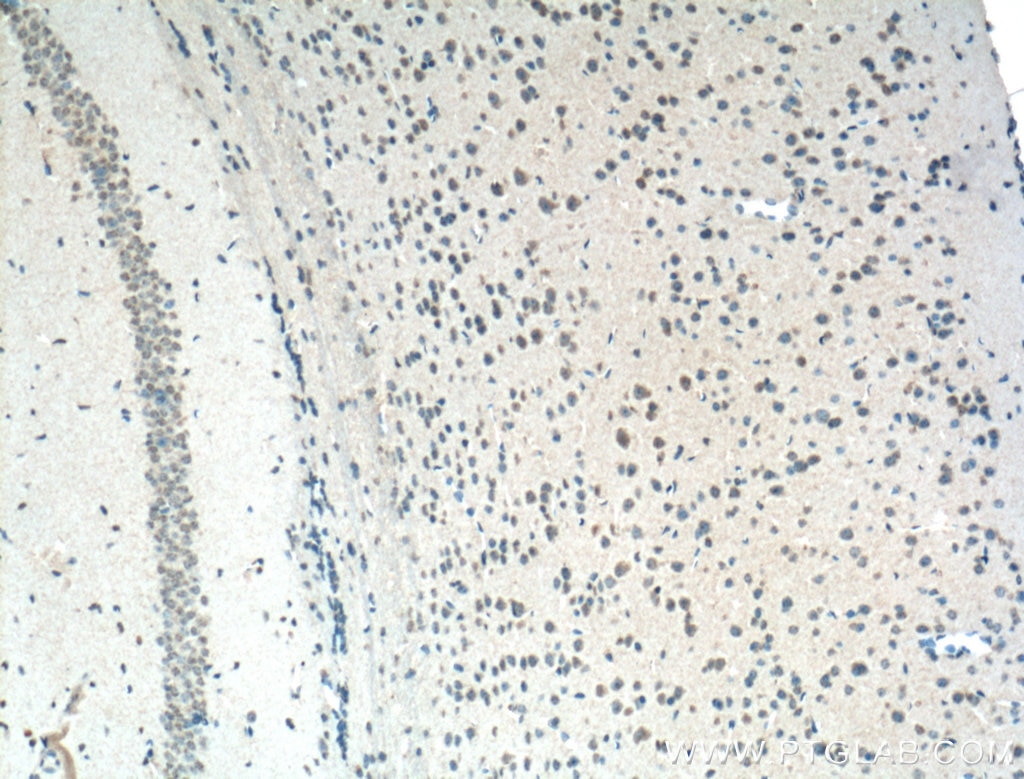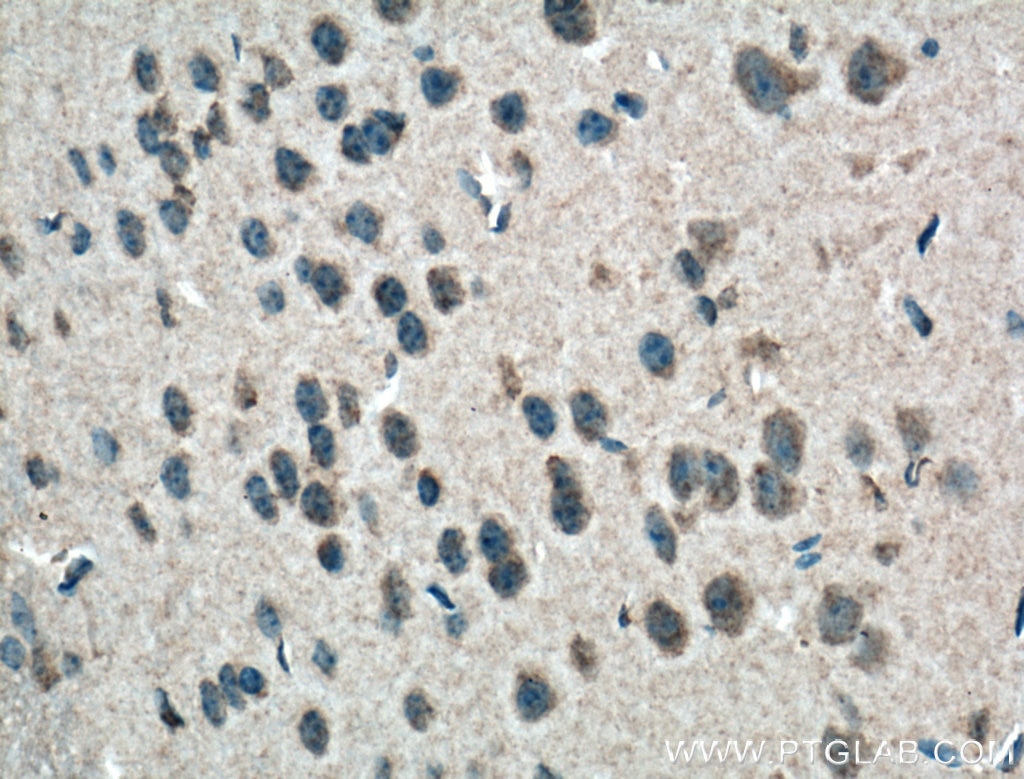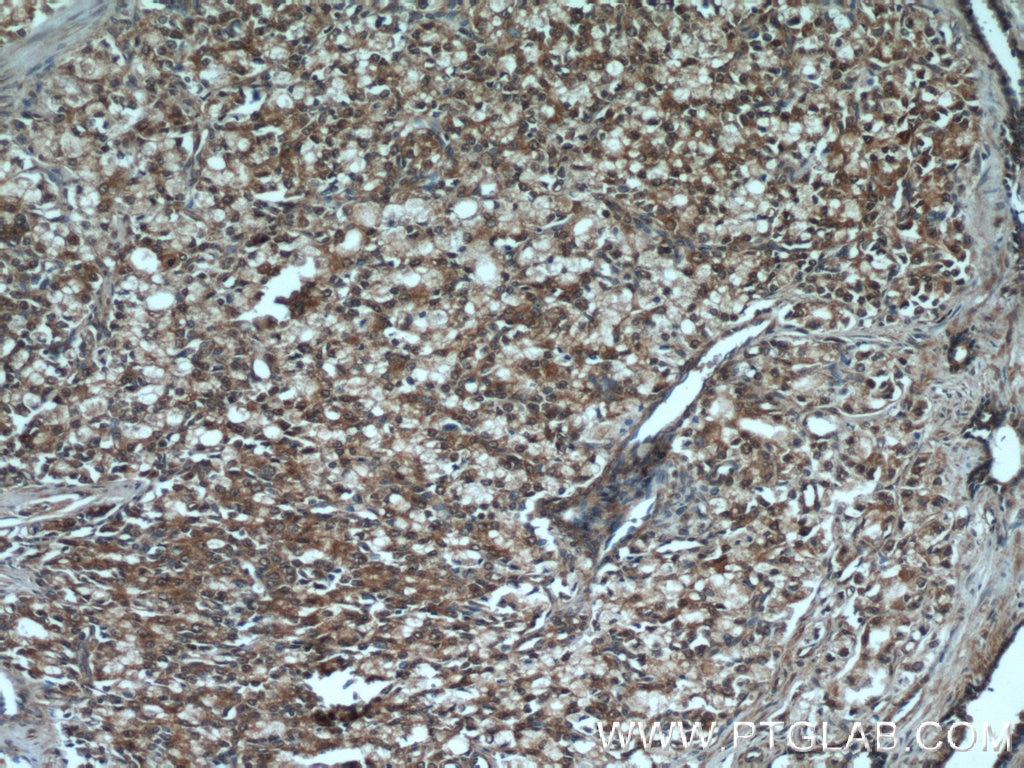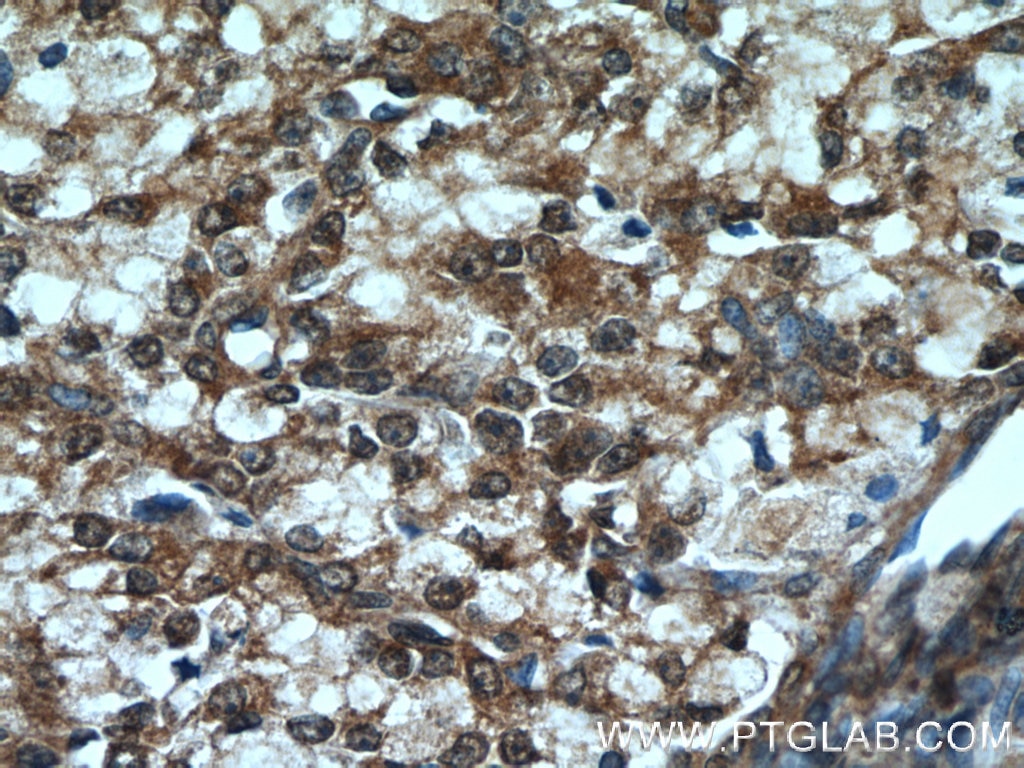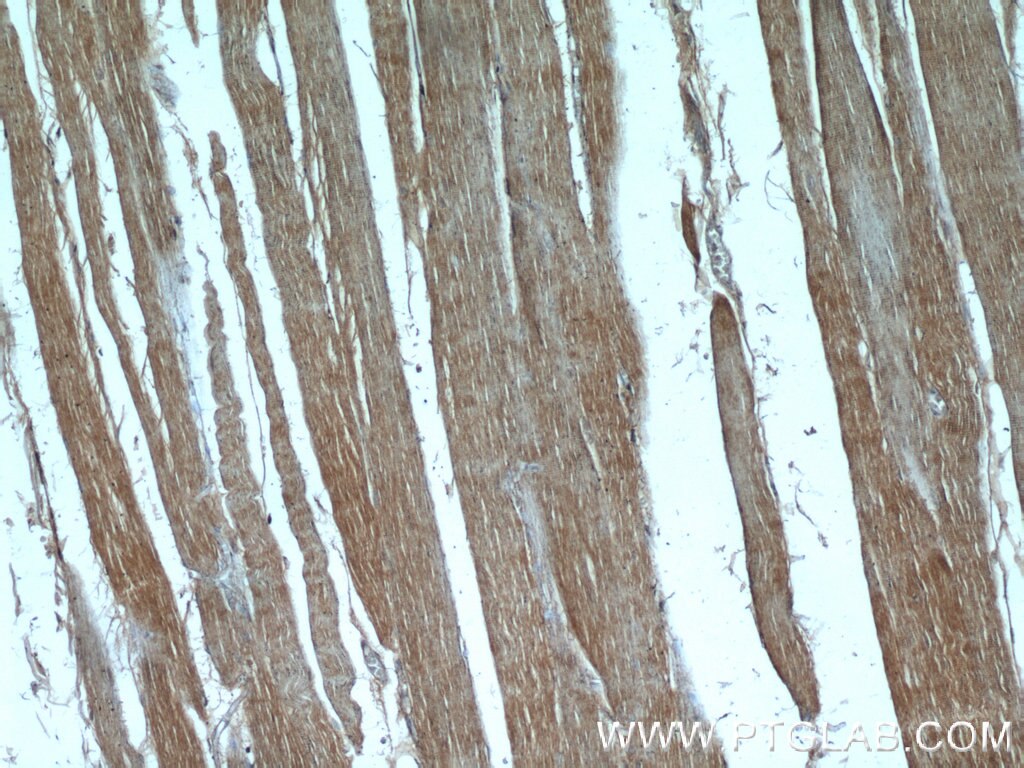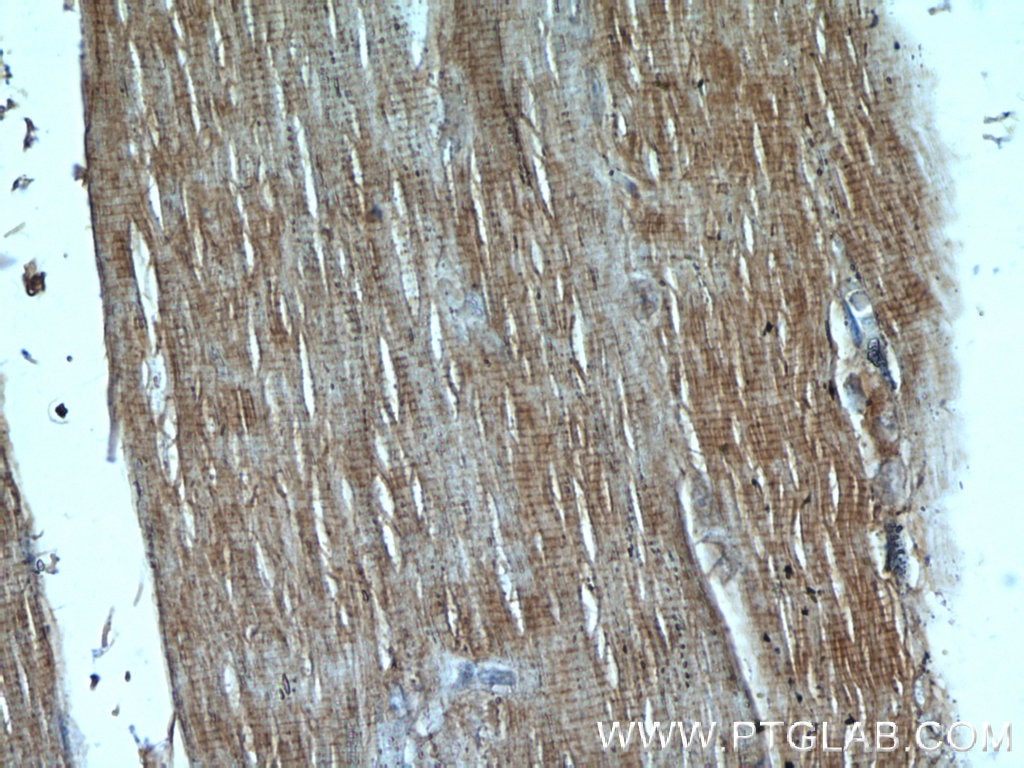- Phare
- Validé par KD/KO
Anticorps Monoclonal anti-PI3 Kinase p85 Alpha
PI3 Kinase p85 Alpha Monoclonal Antibody for WB, IHC, IP, ELISA
Hôte / Isotype
Mouse / IgG2a
Réactivité testée
Humain, Lapin, porc, rat, souris et plus (3)
Applications
WB, IHC, IF, IP, CoIP, ELISA
Conjugaison
Non conjugué
CloneNo.
4G3C11
N° de cat : 60225-1-Ig
Synonymes
Galerie de données de validation
Applications testées
| Résultats positifs en WB | cellules HEK-293, cellules A549, cellules C2C12, cellules HT-29, cellules Jurkat, cellules Neuro-2a, cellules PC-12, cellules U-251, tissu cérébral de lapin, tissu cérébral de porc, tissu cérébral de rat, tissu cérébral de souris, tissu cérébral humain fœtal, tissu de muscle squelettique de porc, tissu de muscle squelettique de rat |
| Résultats positifs en IP | cellules RAW 264.7 |
| Résultats positifs en IHC | tissu placentaire humain, tissu cérébral de souris, tissu de cancer de la prostate humain, tissu de muscle squelettique humain, tissu pulmonaire de souris il est suggéré de démasquer l'antigène avec un tampon de TE buffer pH 9.0; (*) À défaut, 'le démasquage de l'antigène peut être 'effectué avec un tampon citrate pH 6,0. |
Dilution recommandée
| Application | Dilution |
|---|---|
| Western Blot (WB) | WB : 1:5000-1:50000 |
| Immunoprécipitation (IP) | IP : 0.5-4.0 ug for 1.0-3.0 mg of total protein lysate |
| Immunohistochimie (IHC) | IHC : 1:1000-1:4000 |
| It is recommended that this reagent should be titrated in each testing system to obtain optimal results. | |
| Sample-dependent, check data in validation data gallery | |
Applications publiées
| WB | See 249 publications below |
| IHC | See 12 publications below |
| IF | See 3 publications below |
| ELISA | See 1 publications below |
| CoIP | See 1 publications below |
Informations sur le produit
60225-1-Ig cible PI3 Kinase p85 Alpha dans les applications de WB, IHC, IF, IP, CoIP, ELISA et montre une réactivité avec des échantillons Humain, Lapin, porc, rat, souris
| Réactivité | Humain, Lapin, porc, rat, souris |
| Réactivité citée | rat, bovin, canin, Humain, porc, souris, duck |
| Hôte / Isotype | Mouse / IgG2a |
| Clonalité | Monoclonal |
| Type | Anticorps |
| Immunogène | PI3 Kinase p85 Alpha Protéine recombinante Ag2344 |
| Nom complet | phosphoinositide-3-kinase, regulatory subunit 1 (alpha) |
| Masse moléculaire calculée | 85 kDa |
| Poids moléculaire observé | 85 kDa |
| Numéro d’acquisition GenBank | BC030815 |
| Symbole du gène | PI3 Kinase p85 Alpha |
| Identification du gène (NCBI) | 5295 |
| Conjugaison | Non conjugué |
| Forme | Liquide |
| Méthode de purification | Purification par protéine A |
| Tampon de stockage | PBS with 0.02% sodium azide and 50% glycerol |
| Conditions de stockage | Stocker à -20°C. Stable pendant un an après l'expédition. L'aliquotage n'est pas nécessaire pour le stockage à -20oC Les 20ul contiennent 0,1% de BSA. |
Informations générales
Phosphatidylinositol 3-kinase (PI3K) plays an important role in the metabolic actions of INS and is required for adipogenesis. The PI3K pathway has also been identified as an important player in cancer development and progression. The Class IA PI3K heterodimer, which is composed of a P110 catalytic subunit and a P85 regulatory subunit, is activated upon association of the P85 subunit with upstream adaptor proteins or receptor tyrosine kinases. Mutations in PIK3R1 are implicated in cases of breast cancer and associated to SHORT syndrome.
Protocole
| Product Specific Protocols | |
|---|---|
| WB protocol for PI3 Kinase p85 Alpha antibody 60225-1-Ig | Download protocol |
| IHC protocol for PI3 Kinase p85 Alpha antibody 60225-1-Ig | Download protocol |
| IP protocol for PI3 Kinase p85 Alpha antibody 60225-1-Ig | Download protocol |
| Standard Protocols | |
|---|---|
| Click here to view our Standard Protocols |
Publications
| Species | Application | Title |
|---|---|---|
Biomater Res High yield engineered nanovesicles from ADSC with enriched miR-21-5p promote angiogenesis in adipose tissue regeneration | ||
Autophagy The P2RY12 receptor promotes VSMC-derived foam cell formation by inhibiting autophagy in advanced atherosclerosis. | ||
Adv Healthc Mater Bioelectrically Reprogramming Hydrogels Rejuvenate Vascularized Bone Regeneration in Senescence | ||
Anesthesiology Nerve Growth Factor/Tyrosine Kinase A Receptor Pathway Enhances Analgesia in an Experimental Mouse Model of Bone Cancer Pain by Increasing Membrane Levels of δ-Opioid Receptors | ||
Cell Commun Signal BMAL1 ameliorates type 2 diabetes-induced cognitive impairment via AREG upregulation and PI3K/Akt/GSK-3β pathway activation | ||
Int J Biol Macromol Astrocyte-conditional knockout of MOB2 inhibits the phenotypic conversion of reactive astrocytes from A1 to A2 following spinal cord injury in mice |
